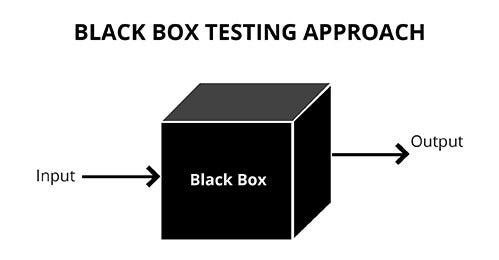Software quality is not just about finding bugs, it’s about preventing them early and validating functionality from the user’s perspective. This is where black box testing techniques and the shift left approach come together to create robust, user-focused, and efficient testing strategies.
In this article, we explore what black box testing is & key techniques you should know, and how adopting a shift left mindset can amplify your software quality efforts. You’ll also see how platforms like ACCELQ help integrate these approaches seamlessly across your SDLC.
What is Black Box Testing?
Black box testing is a kind of software testing in which the tester evaluates the application’s functionality without knowing the internal code structure. It only considers inputs and expected outputs and operates as an end user would.
This makes black box testing ideal for validating business logic, user workflows, and functionality across user interfaces, APIs, or integrated systems.
Some common black box testing types include:
- Functional testing
- Regression testing
- User acceptance testing (UAT)
- System testing
- End-to-end testing
The biggest advantage of black box testing is that it allows lay and/or non-technical users, QA testers, and business associates to test the behavior of existing and new programs, regardless of implementation.
Key Techniques Used in Black Box Testing
Here are the most widely used techniques to design efficient black box test cases:
- Equivalence partitioning
Divide the input data into valid and invalid partitions and test one value from each. Reduces redundant test cases. - Boundary value analysis
Test at the edge of input ranges (e.g., minimum and maximum values), where errors are most common. - Decision table testing
Use tables to test multiple input combinations and their associated outputs, which is helpful in business rules. - State transition testing
Validate how the system behaves when transitioning from one state to another, e.g., login → dashboard → logout. - Error guessing
Based on experience, predict where errors are likely to occur and test those paths.
These techniques allow testers to get high functional coverage with fewer test cases, focusing effort where bugs are most likely to hide.
The Shift Left Approach in Software Testing
Traditionally, testing occurred late in the development cycle, often just before release. The shift left approach advocates for moving testing activities earlier, into development and even requirements stages.
Key principles of shift left:
- Encourage test design during story grooming and planning
- Run automated tests as part of CI pipelines
- Involve testers in design reviews and architecture discussions
- Pair developers and testers for early feedback loops
By combining black box techniques with shift left thinking, you can design test scenarios early based on user expectations, while developers build functionality to support them. This alignment minimizes rework, reduces last-minute bugs, and accelerates delivery.
Since these practices closely align with continuous integration and delivery principles, enrolling in a DevOps course can help teams better understand how development and testing workflows merge to create faster, more reliable release cycles.
How ACCELQ Helps Teams Shift Left with Black Box Testing?
ACCELQ is a modern, codeless test automation platform that empowers teams to implement black box testing strategies right from sprint planning.
Here’s how:
- Test authoring with plain English, no coding needed
- Real-time integration with requirements and user stories
- Built-in support for equivalence partitioning and state modeling
- Seamless execution across Web, API, Mobile, and Desktop layers
- Smart test generation based on user flows and application logic
ACCELQ enables early collaboration between testers, BAs, and developers, creating a shift-left culture where quality becomes everyone’s responsibility.
Making the Decision: When to Use These Approaches
Here’s a quick guide to help decide when black box techniques and shift left testing are most valuable:
| Scenario | Recommended Approach |
| Early-stage agile teams | Adopt shift-left practices with lightweight black box test planning |
| Large enterprise with manual testing bottlenecks | Introduce ACCELQ for scalable black box automation |
| Complex business rules | Use decision tables and equivalence partitioning |
| New features with unclear impact | Focus on boundary and state transition tests |
Combining black box testing with shift left is not only strategic, it’s essential for modern software teams aiming to deliver value early and often.
Conclusion
Black box testing techniques help validate software the way users actually use it, while shift left testing ensures this validation happens early, saving time, cost, and reputation. When used together, they create a proactive quality strategy that fits seamlessly into modern agile and DevOps workflows.
But with tools such as ACCELQ to help us, it doesn’t have to be this way, that’s because with support for test design and execution across the life-cycle, we can use an effective black box approach from day one. If you focus on shortening cycle times, increasing test coverage, and getting testing in line with real user behavior, it’s time to step up with shift-left testing and automation in your corner.




